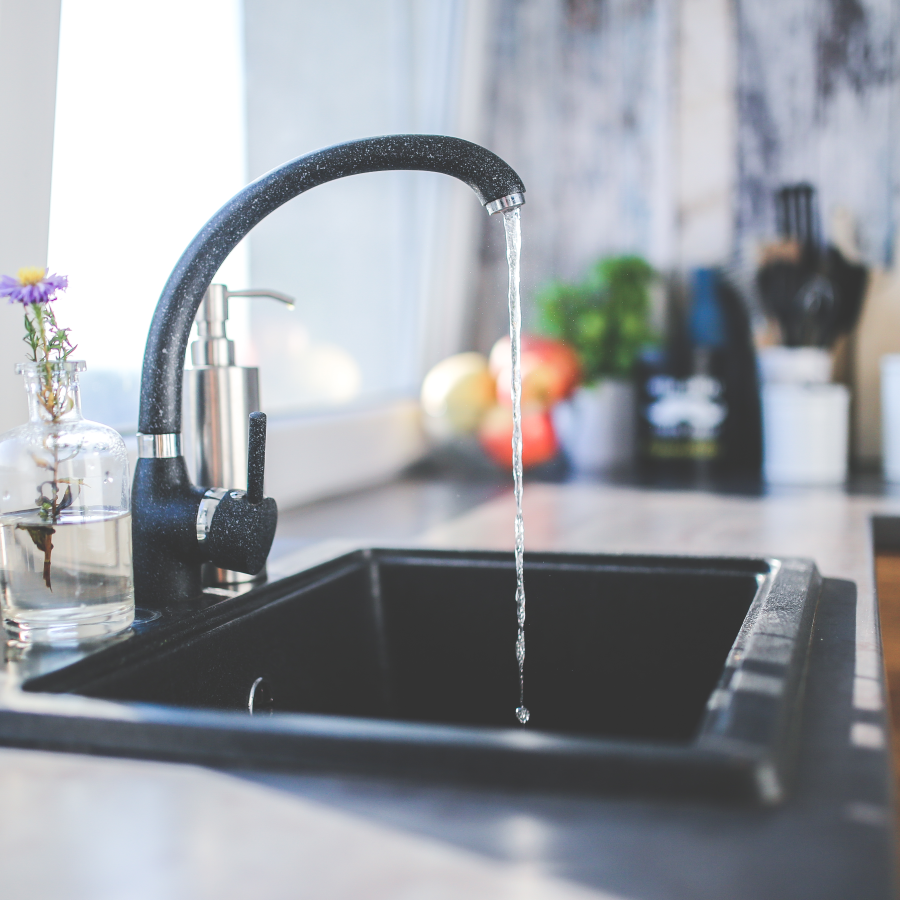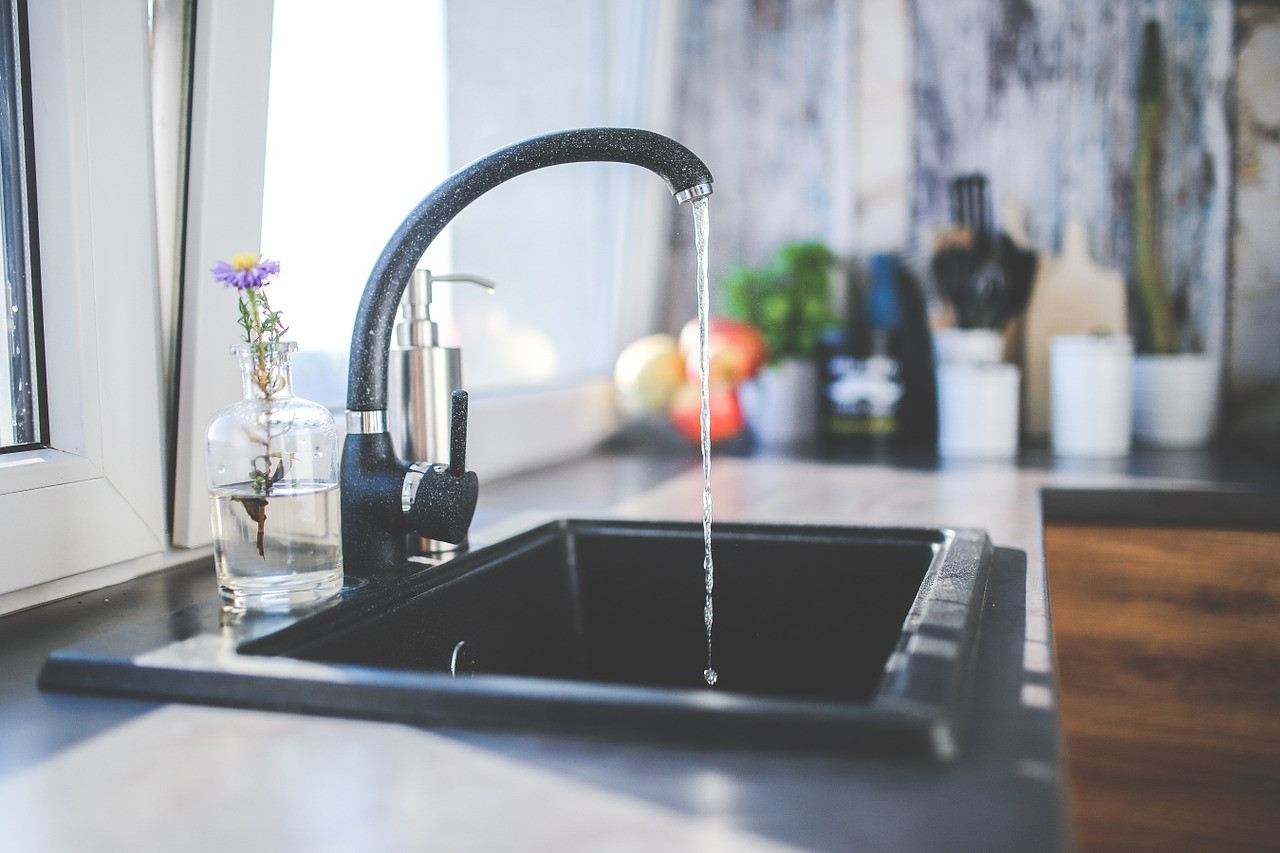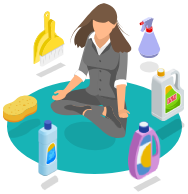
Is your kitchen a breeding ground for harmful bacteria?

Is your kitchen a breeding ground for harmful bacteria?
No matter how clean your kitchen may be, common bacteria can lurk on your cooking tools and other hard, non-porous surface areas. Research has shown that E.coli, salmonella and staph is often found in both domestic and commercial kitchens around the UK .(1)
The study conducted, also found that kitchens are often covered in potentially harmful micro-organisms such as Campylobacter. Consumer hygiene habits have frequently been found to be inadequate and relate both to microbial growth, survival and cross-contamination. (2)
Raw Chicken
A government food survey has found that most raw chicken sold in the UK contains campylobacter, a bacterium that can cause food poisoning. The survey, by the Food Standards Agency (FSA), checked for the presence of campylobacter in over 3,000 samples of fresh chicken, and the results showed that 65% were contaminated with traces of the bacteria. Campylobacter is estimated to cause 300,000 cases of food poisoning annually, so we want to be ensuring that we are sanitising our work surfaces and killing the nasty bacterium. (3)
How careful are you when handling raw chicken? It may seem pretty obvious about the dangers associated with raw chicken but a recent study has revealed that two-thirds of consumers failed to adequately wash their hands after handling raw chicken, it also showed that nearly 30 percent of people failed to wash or change the cutting board after cutting raw chicken and one-third failed to wash or change a knife used to cut raw chicken before cutting raw vegetables. (2)
Sanitising
We would recommend using a professional sanitiser in order to kill the bacterium when preparing food in your kitchen. This is not only applicable for raw meats but raw vegetables also have traces of bacterium on them. Keep yourself and your family safe and use a professional sanitiser. Evans Trident is an excellent product to use in your home as it is a mulit-use sanitising powder and can be used for a wide range of tasks in healthcare, catering and general housekeeping. This product can be used neat or in solution and provides over 10,000ppm available chlorine for adequate strength in high risk areas. It is ideal for sanitising food preparation areas and equipment as it removes tannin from crockery and mould and mildew from grout. You can buy Evans Trident now on our online store, for a 500g tub it is only £2.53 incl VAT (absolute bargain considering how effective it is). Buy it here
You can also buy Evans Trident in bulk, on The Cleaning Collective online store, we stock the product in cases of 12. If you are however looking for something for your commercial kitchen, we would highly recommend buying Evans Est-eem Cleaner Sanitiser. This is an unperfumed cleaner and sanitiser: it kills all bacteria, whilst cleaning in one use; it is suitable for contact with equipment, floors, and walls. It comes in a case of x2 5L and makes up to 400 trigger-spray bottles at 25:1 dilution ratio.
So if you are working on a larger scale, this product works brilliantly and is extremely effective for the price. Check the product out here
Dishcloths harbour life threatening bacteria
Dishcloths have six times as much bacteria as toilet handles in the UK, according to a study commissioned by the Global Hygiene Council (5). The study also found that Six out of 10 cloths harbour harmful E.coli bacteria, which can cause stomach upsets and prove fatal to vulnerable people and that 85 per cent of Britons fail to clean their dishcloth at a high enough temperature to kill the germs. Seven per cent of dishcloths had more than one billion bacteria per square metre and 60 per cent were contaminated with E.coli. These are all absolutely shocking figures.
At The Cleaning Collective we would recommend sanitising your dishcloth regularly, washing it at a high temperature is often not enough to kill bacteria such as E.coli. You can use Evans Trident, prepare a 1% solution (10 g per litre warm water). Immerse cloths for up to 30 minutes & rinse thoroughly with clean water. Allow to air dry. Available chlorine: 250 ppm. Alternatively you can buy semi disposable dishcloths and dispose of them regularly. We stock all purpose cloths and at only £2.19 for 50, they work out 4.3p each. 4p is a pretty fair price when it comes to looking after your family’s health.
5 simple steps to help reduce the risk of bacterial cross-contamination:
1. Always use separate bags for raw meats and raw vegetables when doing your food shopping to avoid cross contamination.
2. Use a glass cutting board when slicing raw meats and vegetables. The surfaces of plastic and wood cutting boards can be cut by knives during food preparation, and bacteria can get into these areas.
3. When cooking or preparing food, ensure that any dishes, utensils or other hard non-porous kitchen surfaces that may have touched raw eggs or raw meat are thoroughly cleaned before moving on to your next prep task.
4. Use a high quality, professional sanitiser to ensure that the bacteria has been killed. Check out our sanitising products.
5. Clean as you go, washing thoroughly knives, cutting boards, dishes, prep tools and hard, non-porous kitchen surfaces after each use. Ensure you use a quality washing up liquid and hot water to kill bacteria such as E. coli and Salmonella.
We stock a range of different sanitising products so if you want to try something a little different to products mentioned above, please check out the rest of our sanitising products
Please bare the above in mind when preparing food, whether it be in your home or business. The effects of not properly sanitising your kitchen equipment can be fatal. Nobody likes being ill (our director Jo, has just had food poisoning, it’s really not nice) but CDC estimated that last year as many as 48 million people got sick from a foodborne illness, 128,000 were hospitalised, and 3,000 people actually died (4).
Stay safe and sanitise your kitchen!
Beth ?
References
- "The importance of hygiene in the domestic kitchen: Implications for preparation and storage of food and infant formula." 2009. Perspectives in Public Health, March. Vol. 129 No. 2 l. http://rsh.sagepub.com/content/129/2/69.refs.html
- https://www.nhs.uk/news/food-and-diet/food-poisoning-bug-in-chicken/
- "Cooking Practices in the KitchenObserved Versus Predicted Behavior." 2009. Risk Analysis, Vol. 29, No. 4. DOI: 10.1111/j.1539-6924.2008.01189.x
- https://www.cdc.gov/foodsafety/foodborne-germs.html
- https://www.dailymail.co.uk/health/article-2680928/Which-household-item-dirtier-toilet-60-DISHCLOTHS-harbour-life-threatening-bacteria-UKs-filthiest-world.html
Stay Connected
Want to hear more from The Cleaning Collective? Sign up to our mailing list for the latest offers and news
Stay Connected
Stay connected and be the first to know about our latest products, special offers, and exciting news:The Cleaning Blog
Want to learn more about cleaning? From the latest cleaning and hygiene news to handy how-to guides, why not check out our most popular blog categories.Stay Connected
Stay connected and be the first to know about our latest products, special offers, and exciting news:











